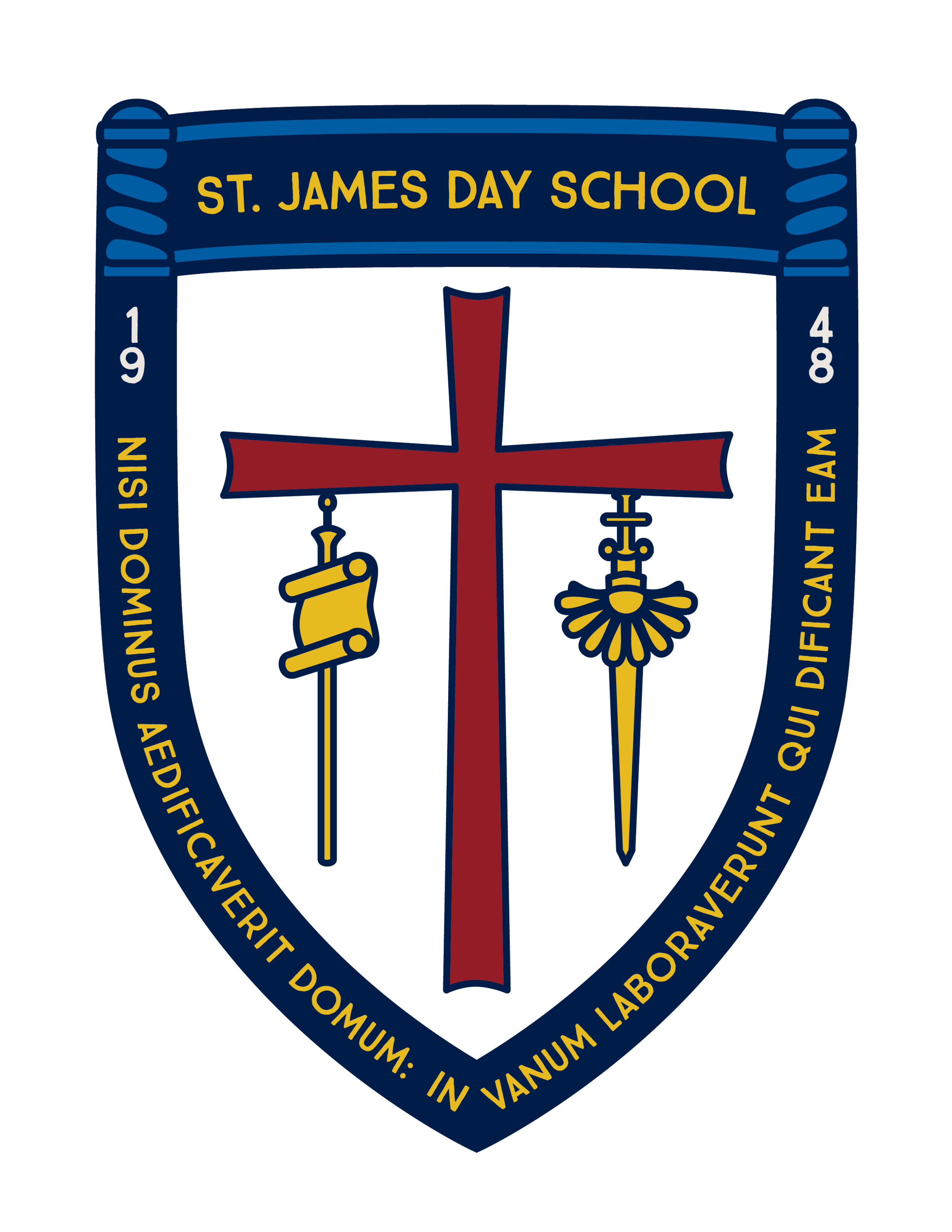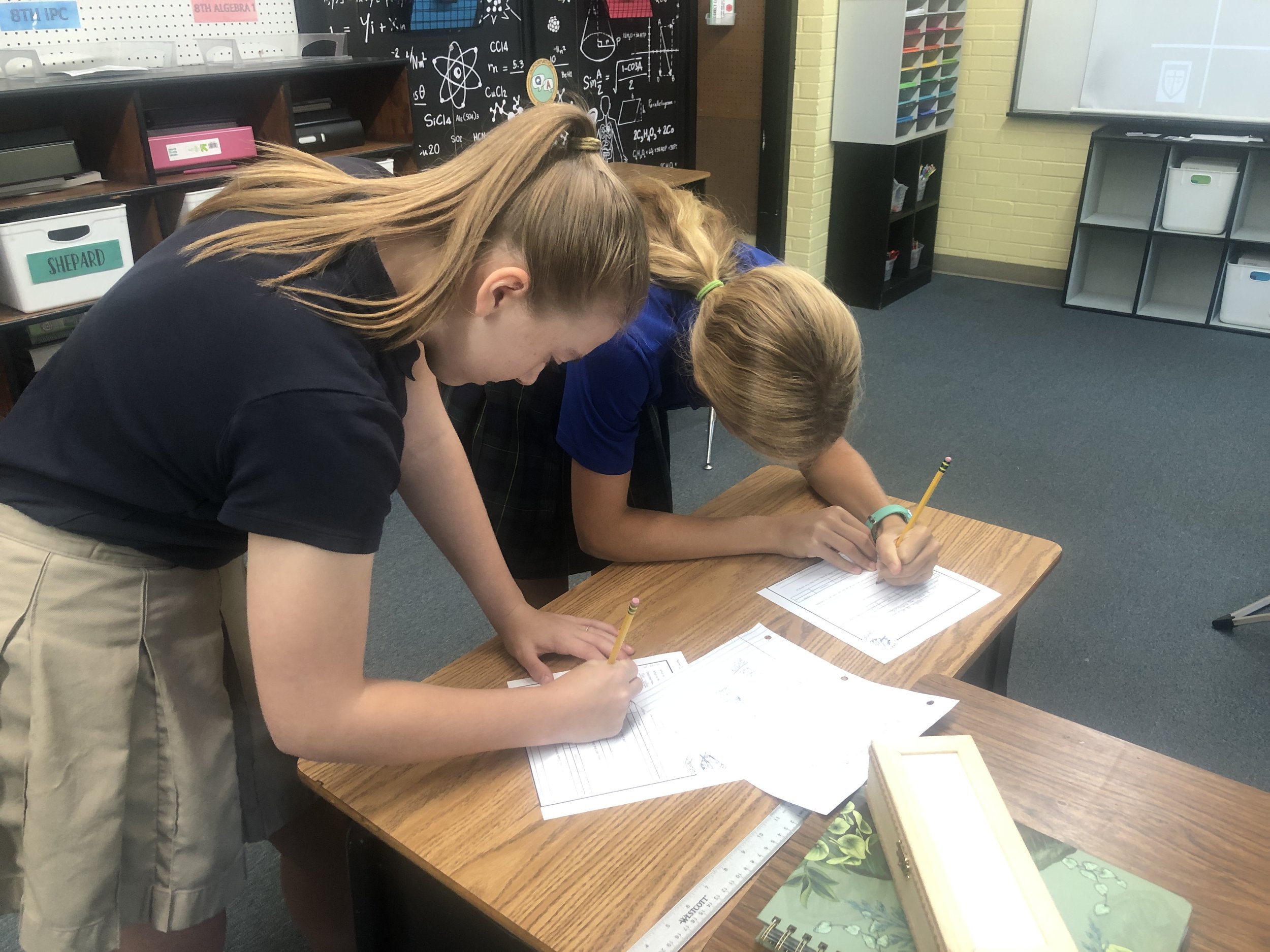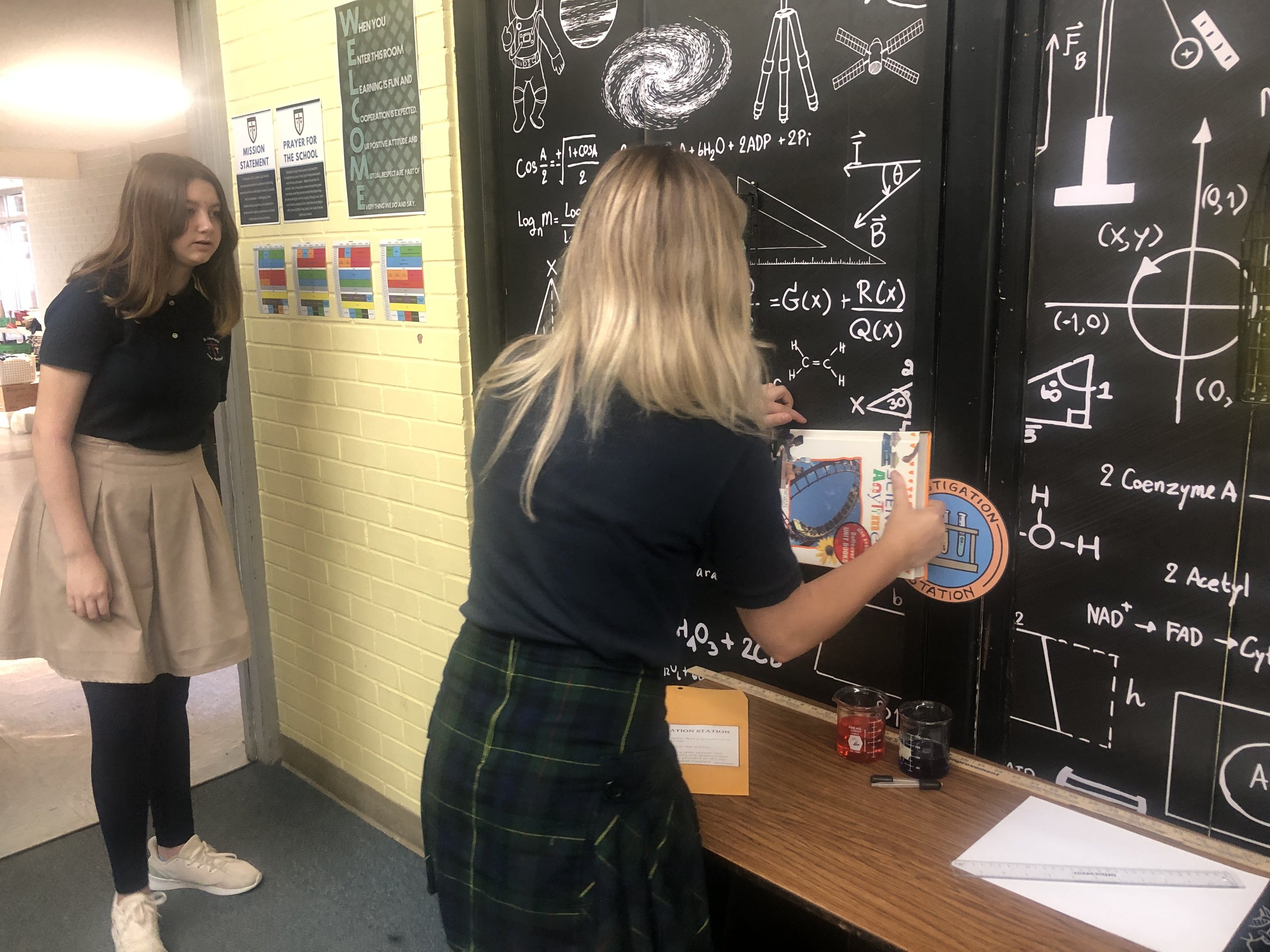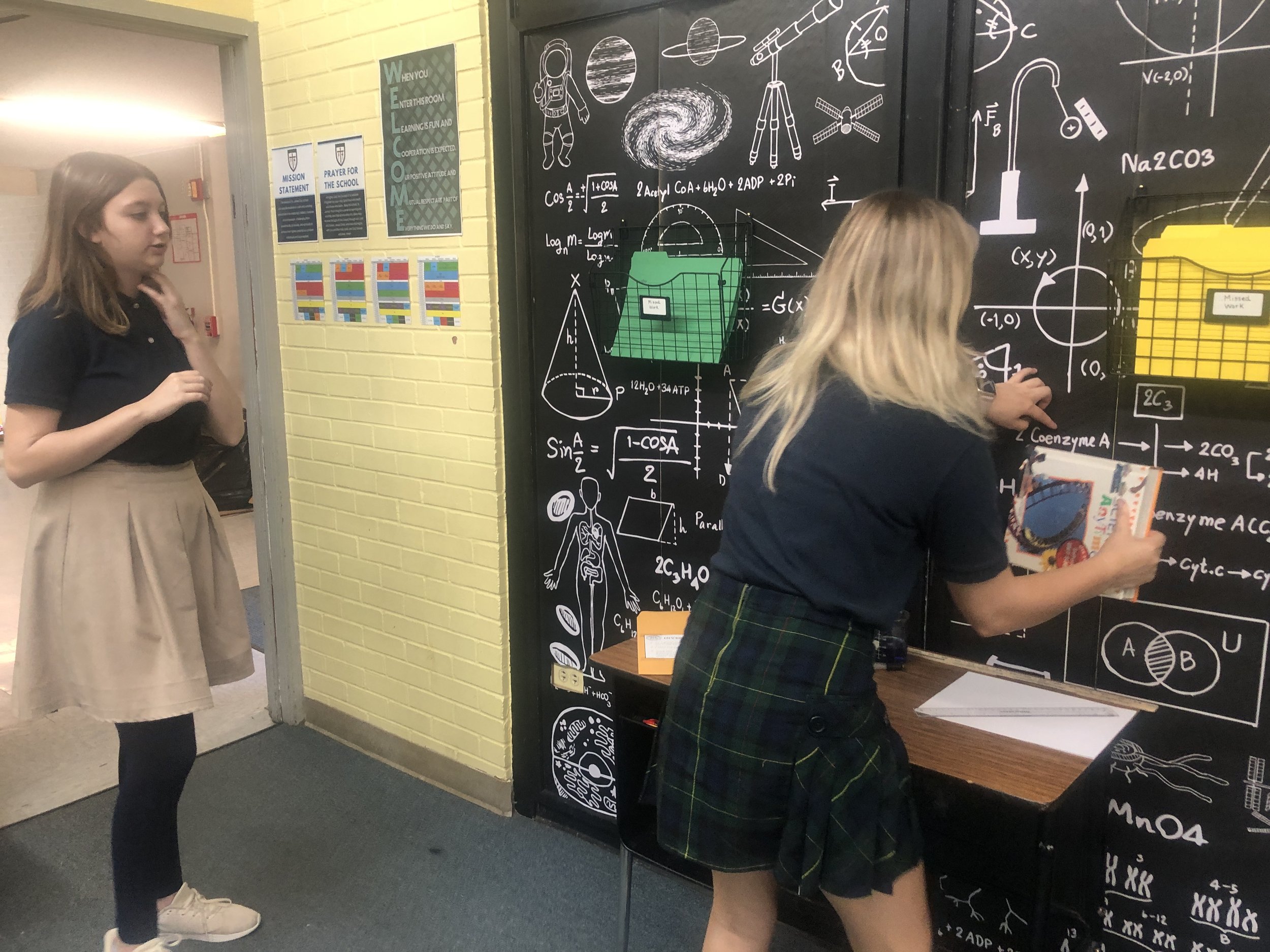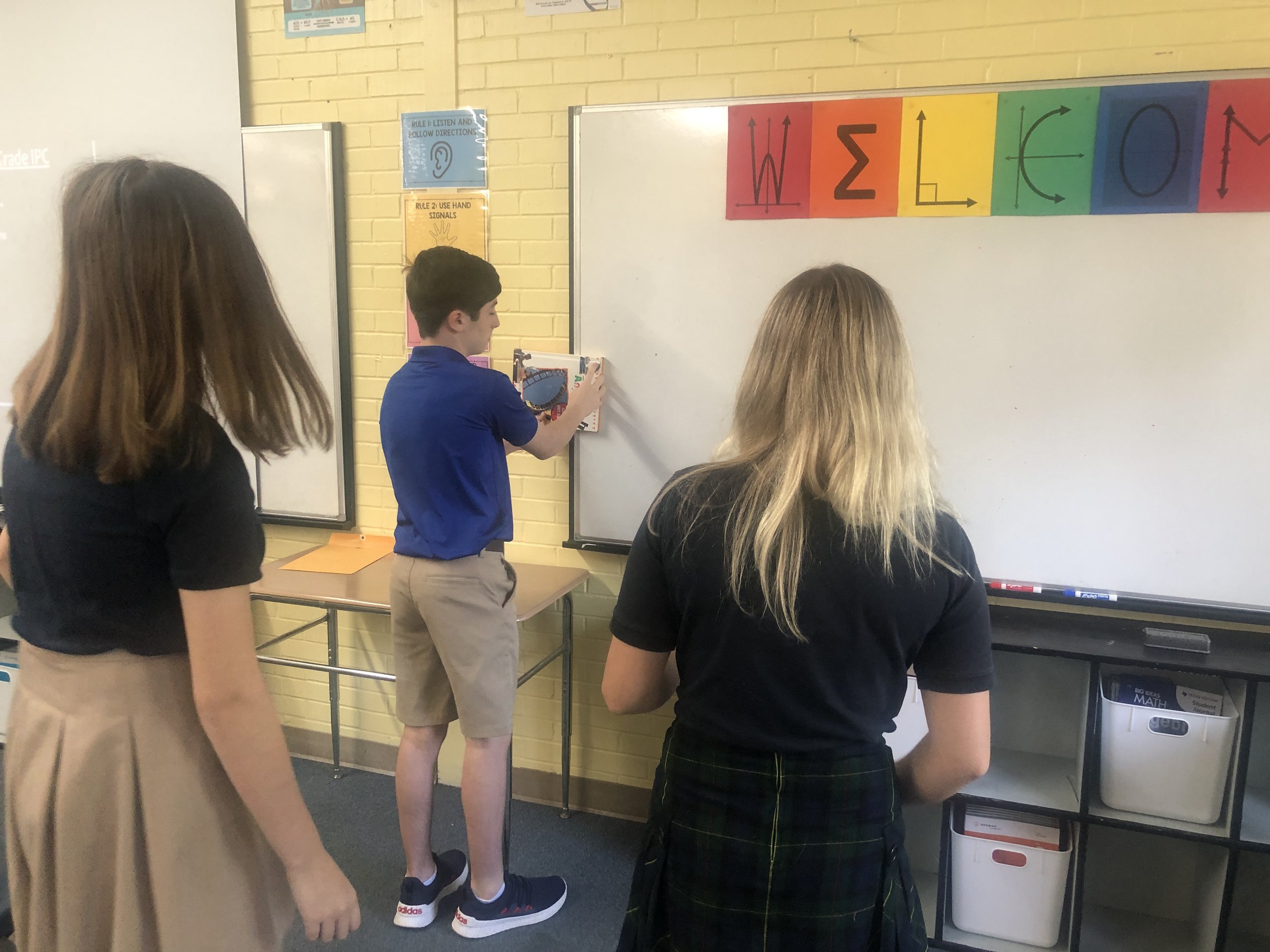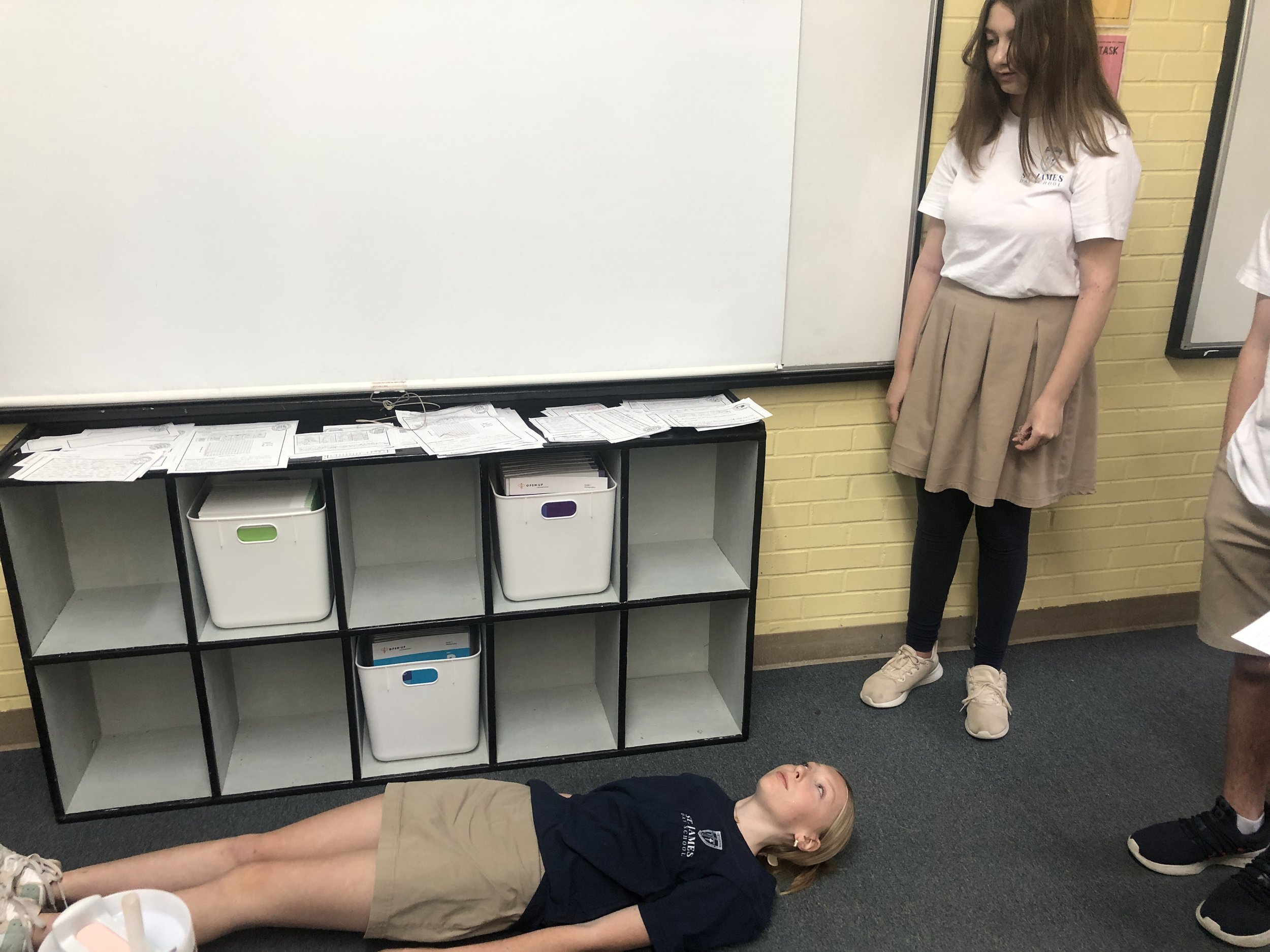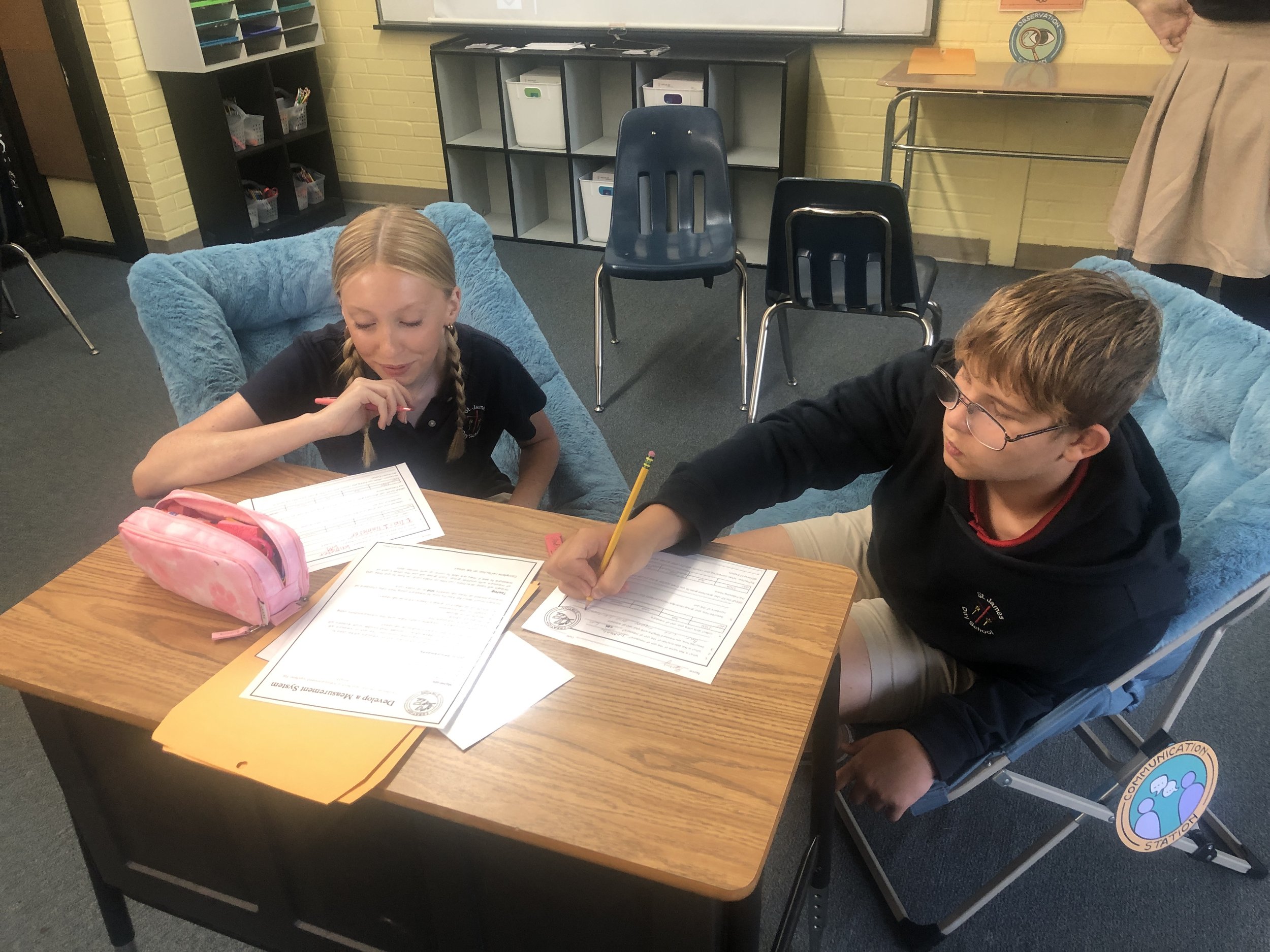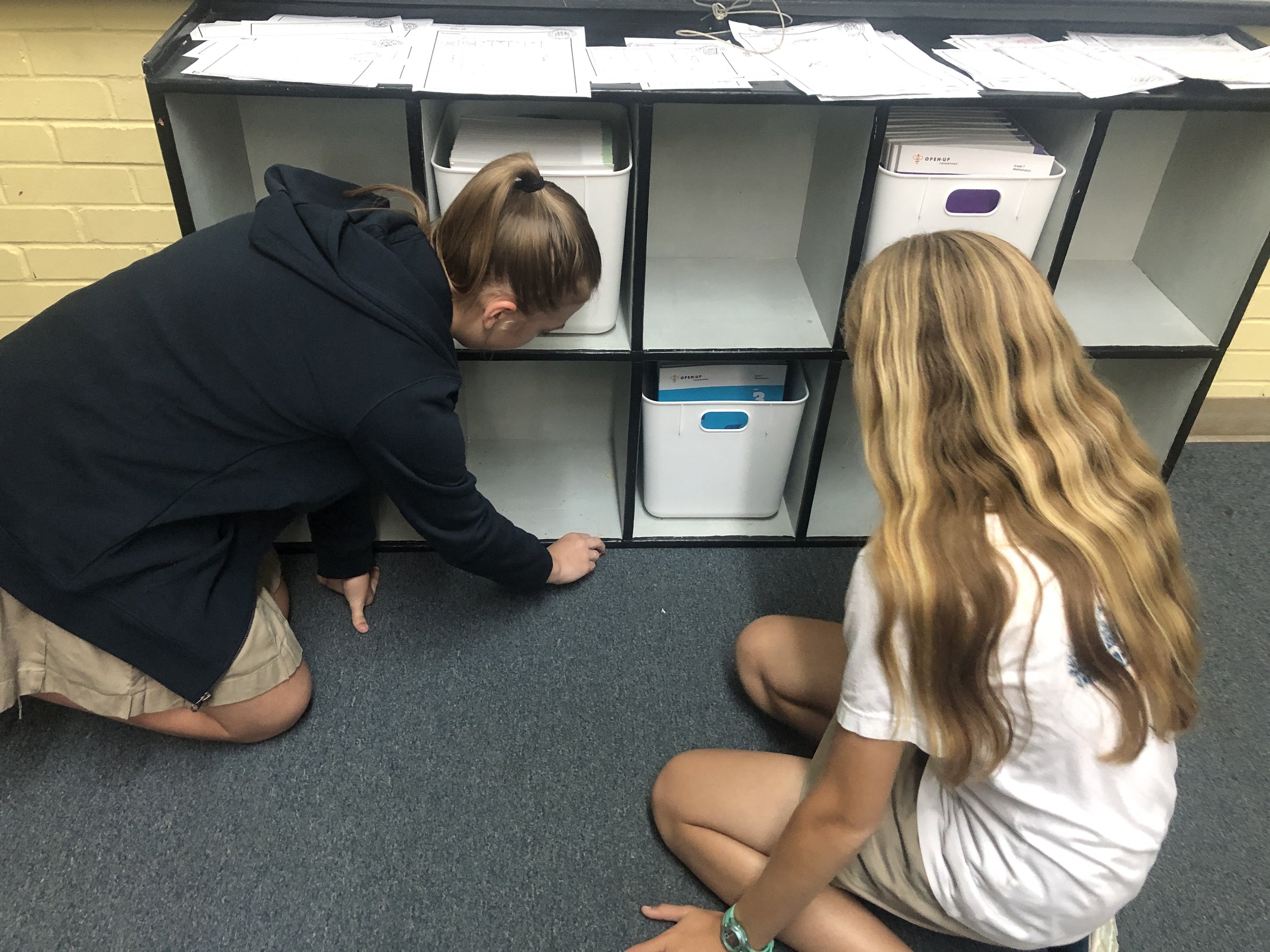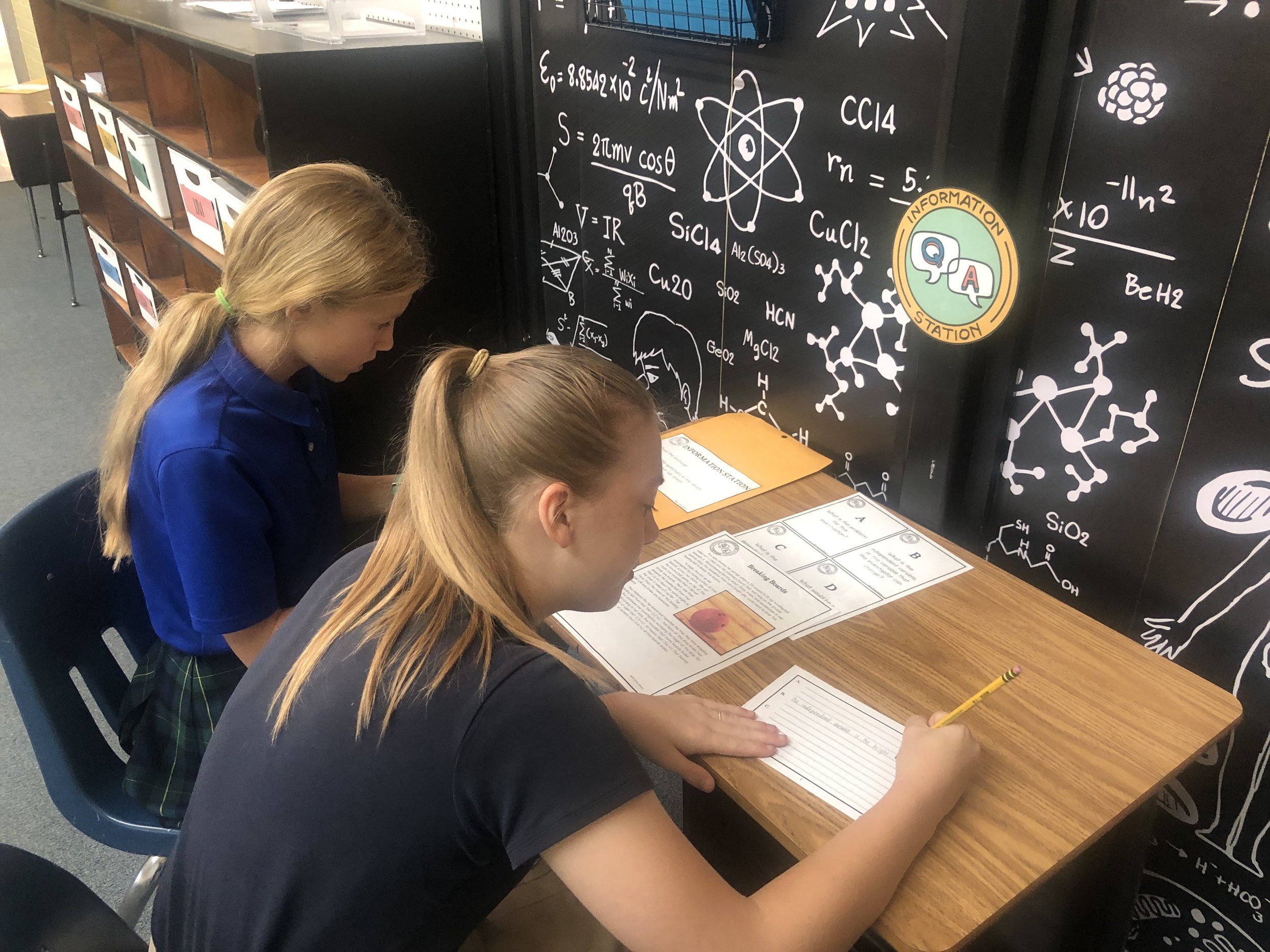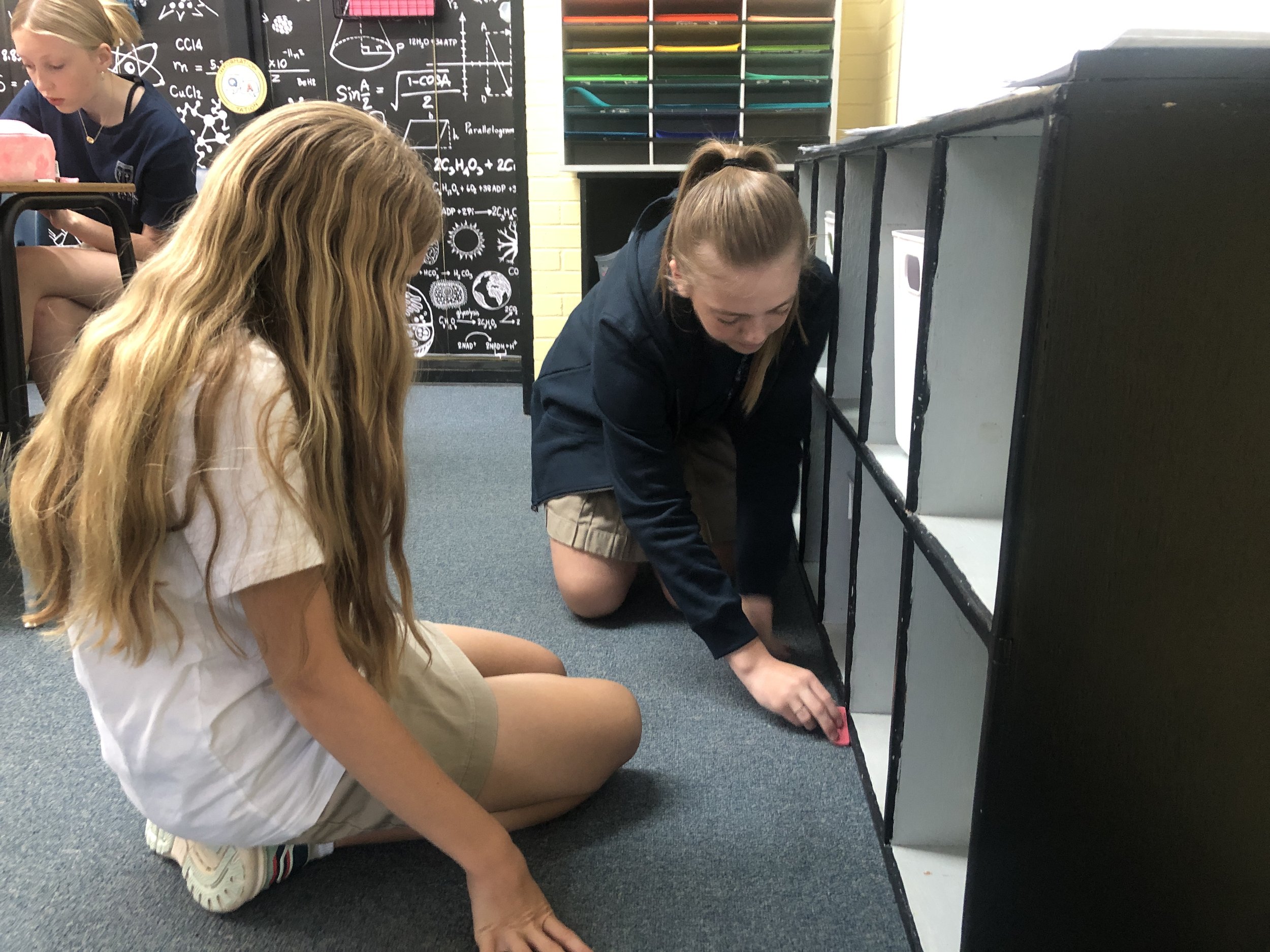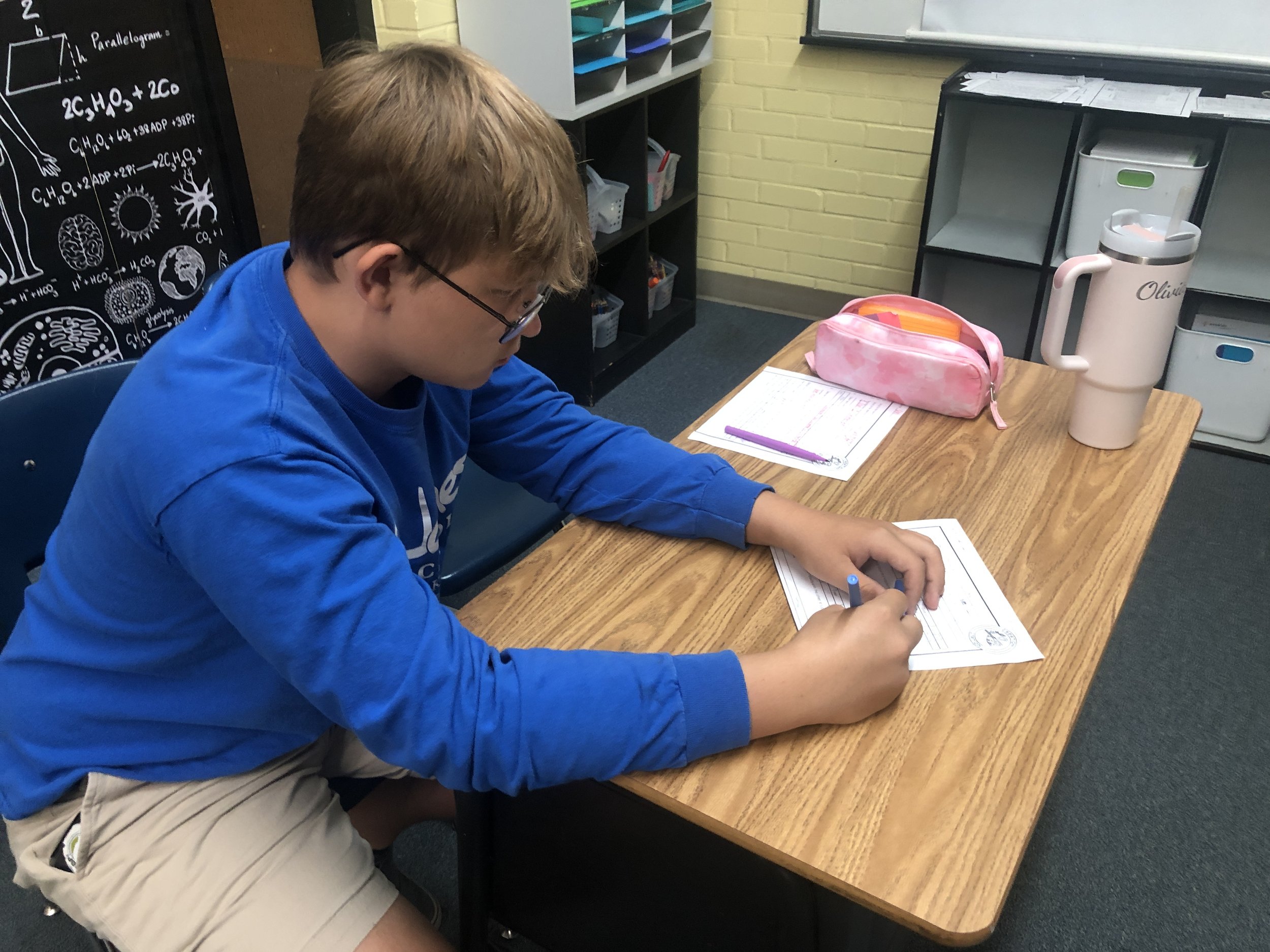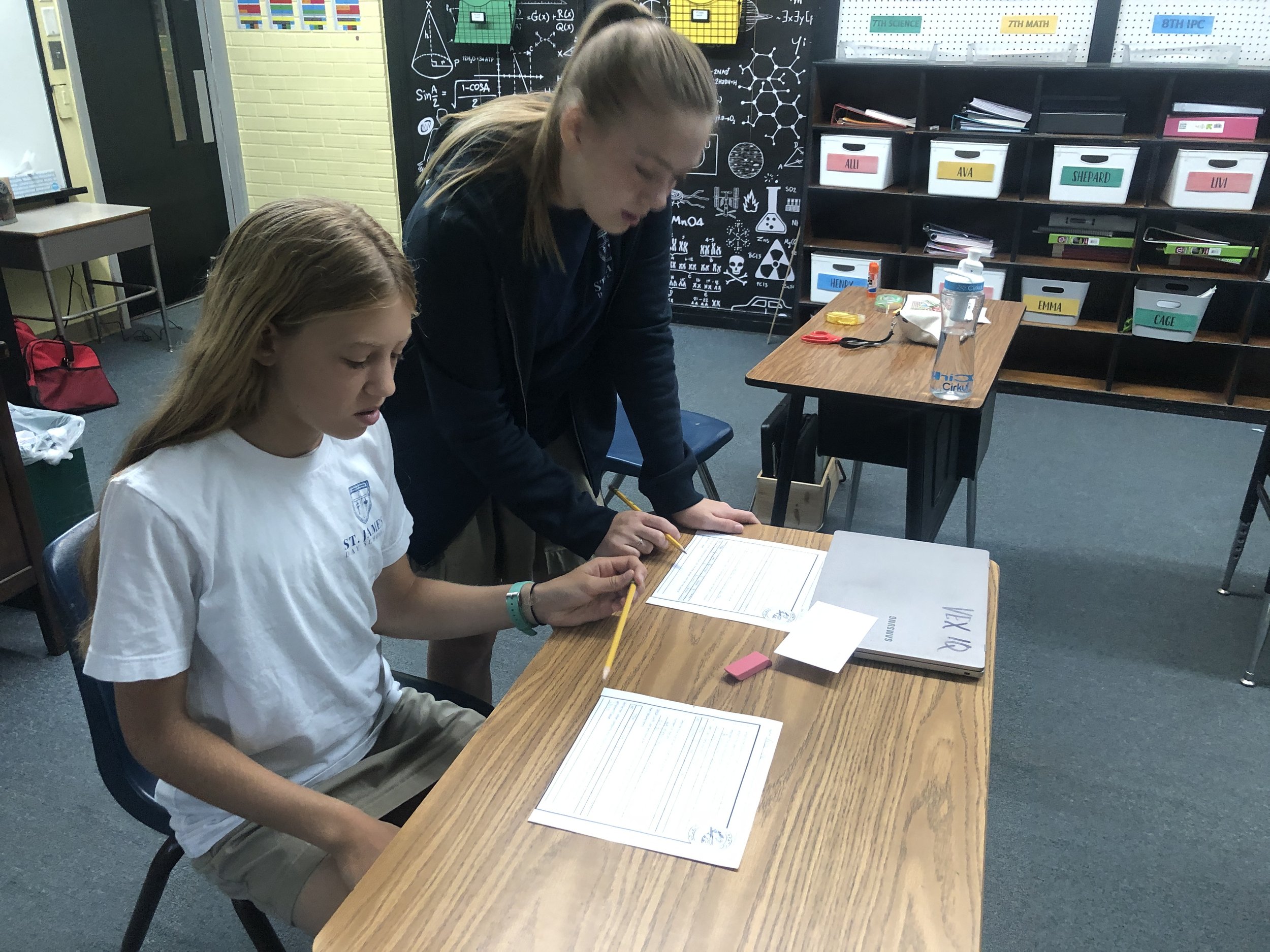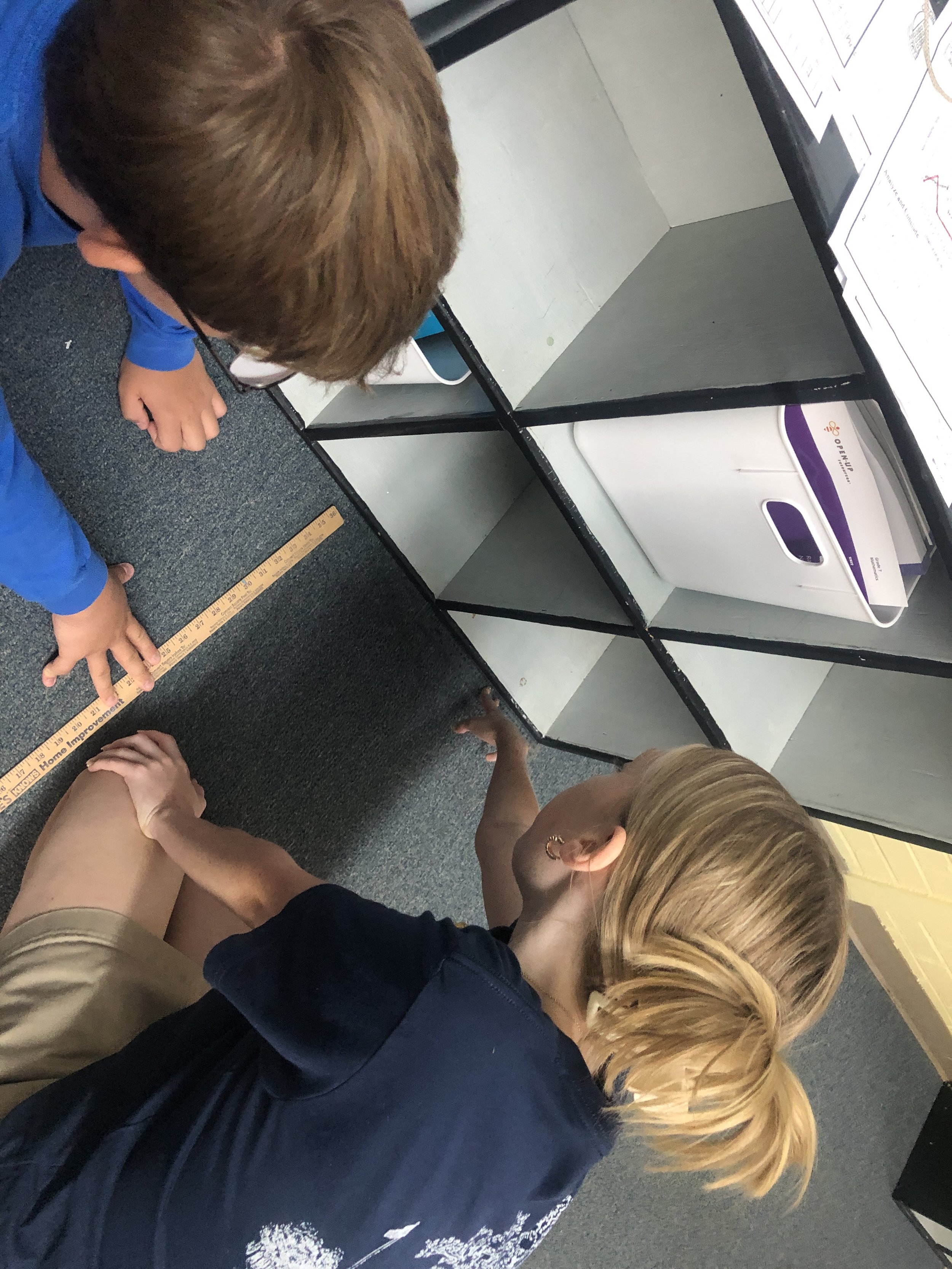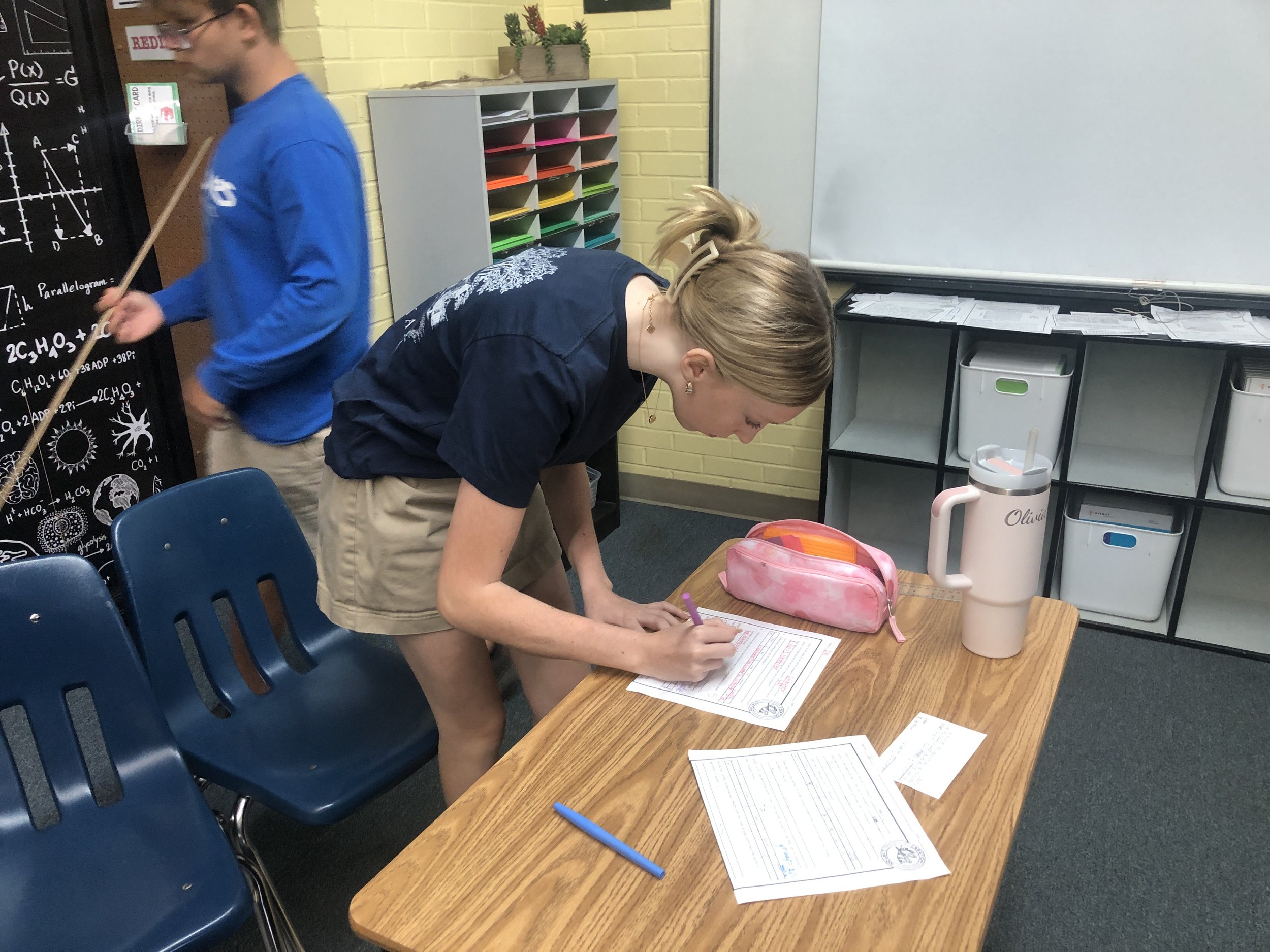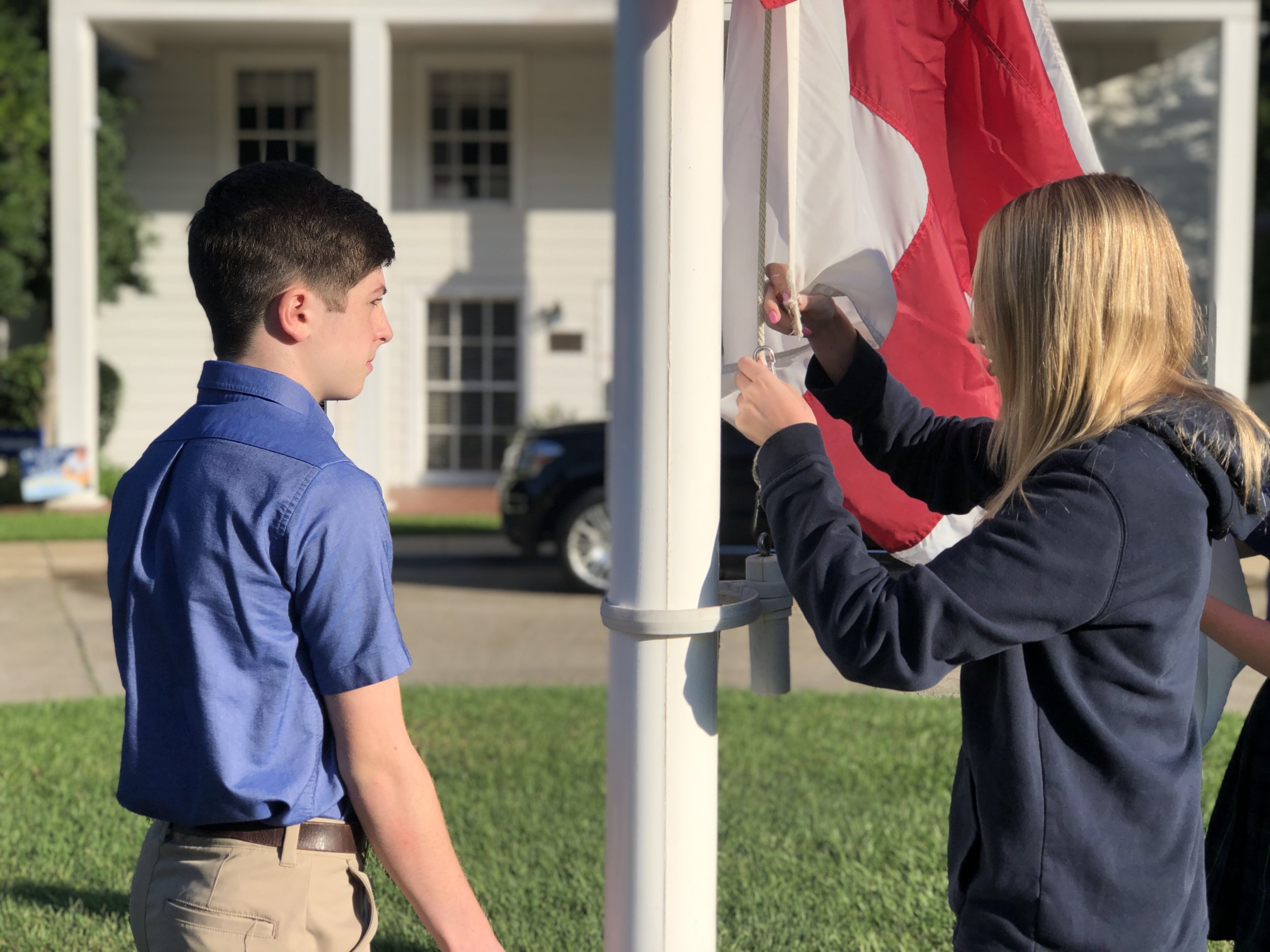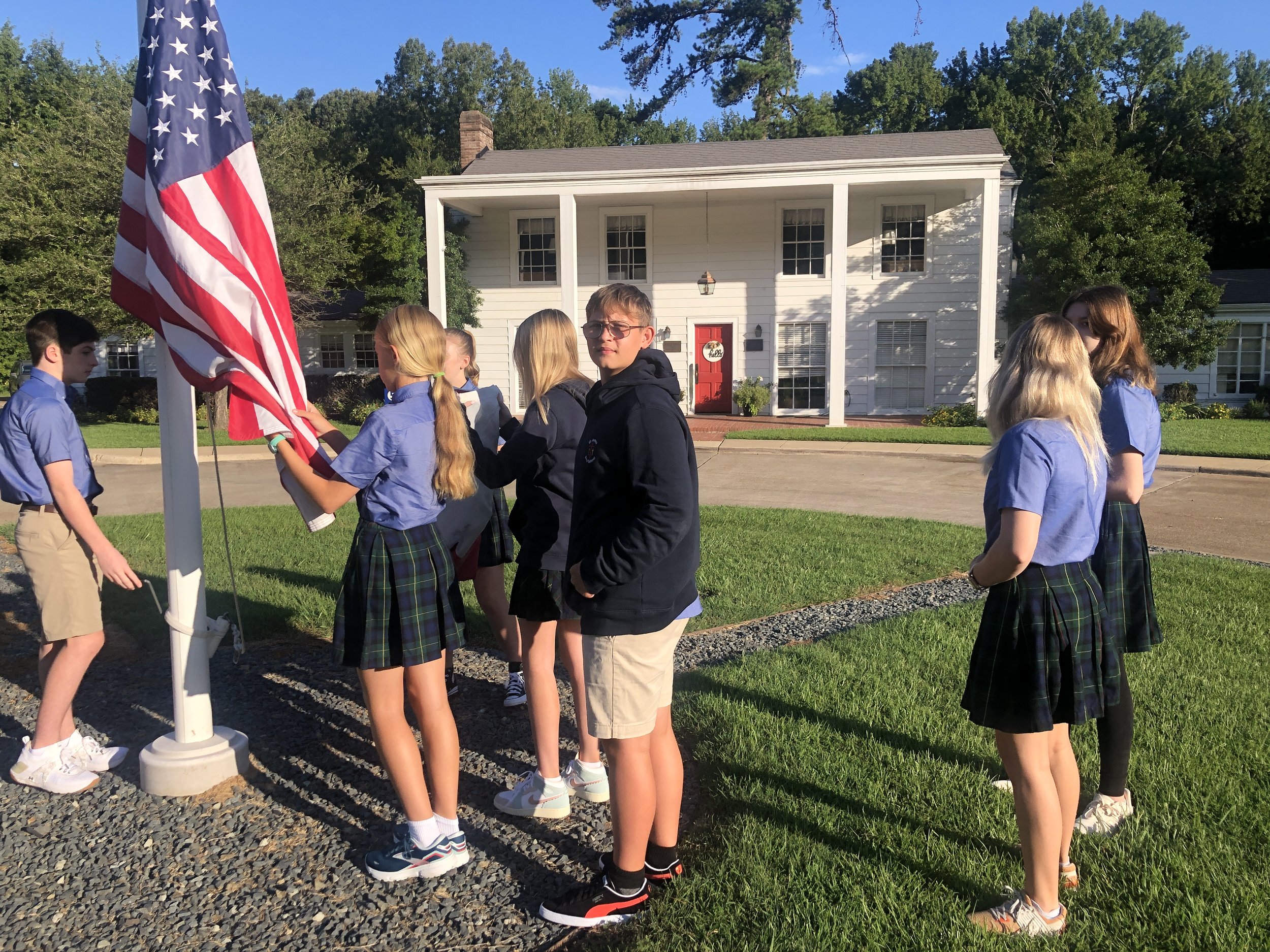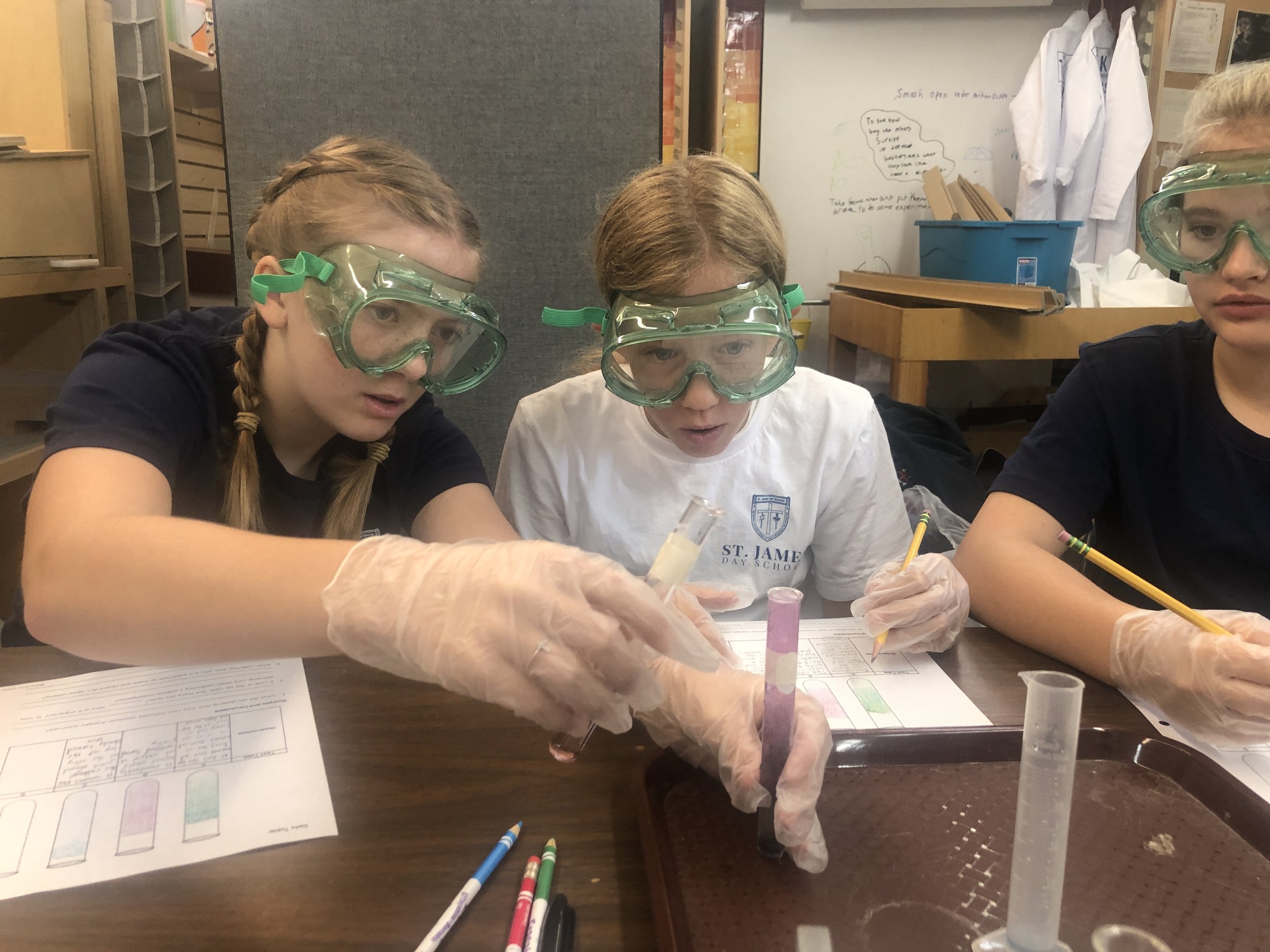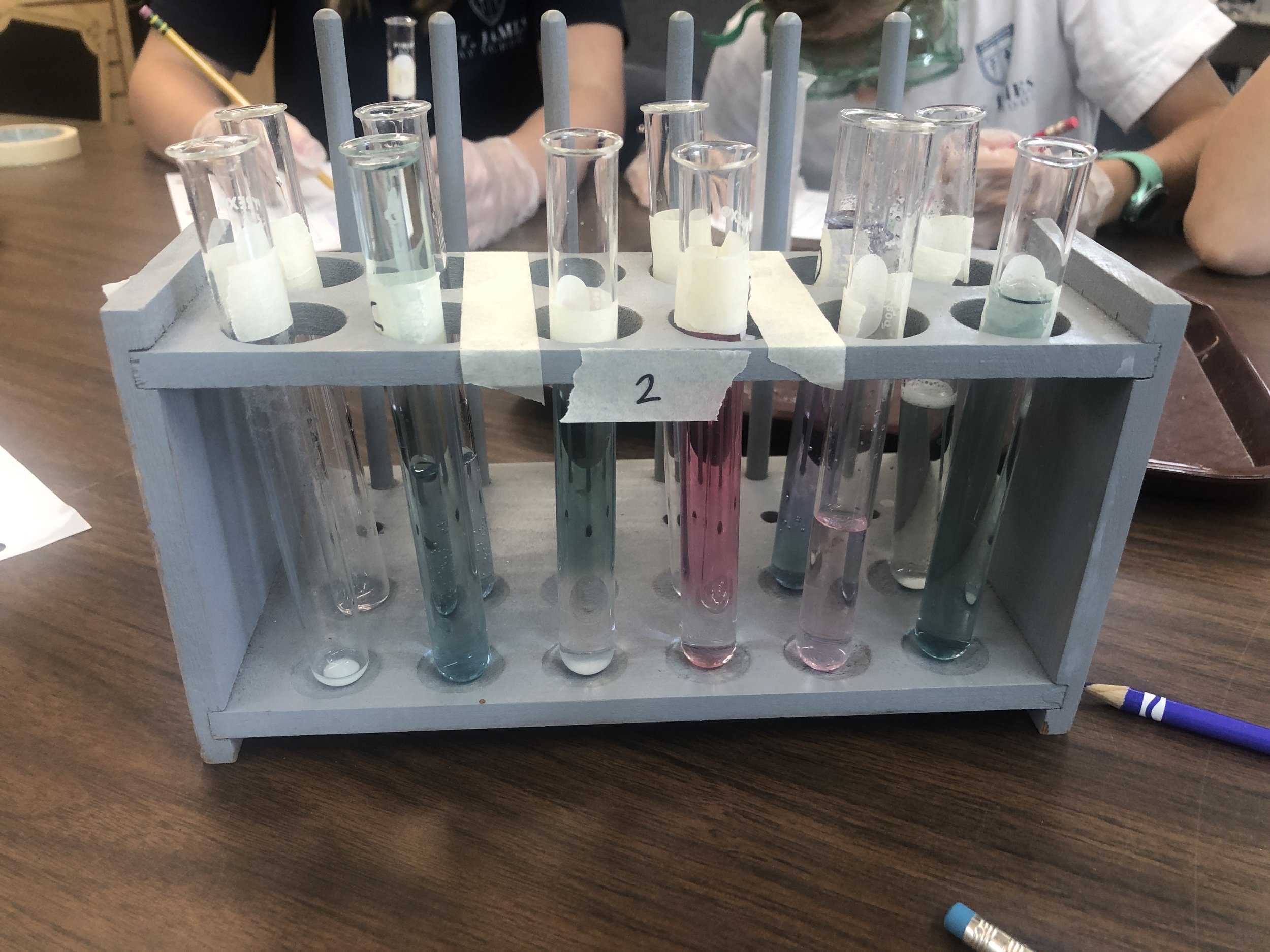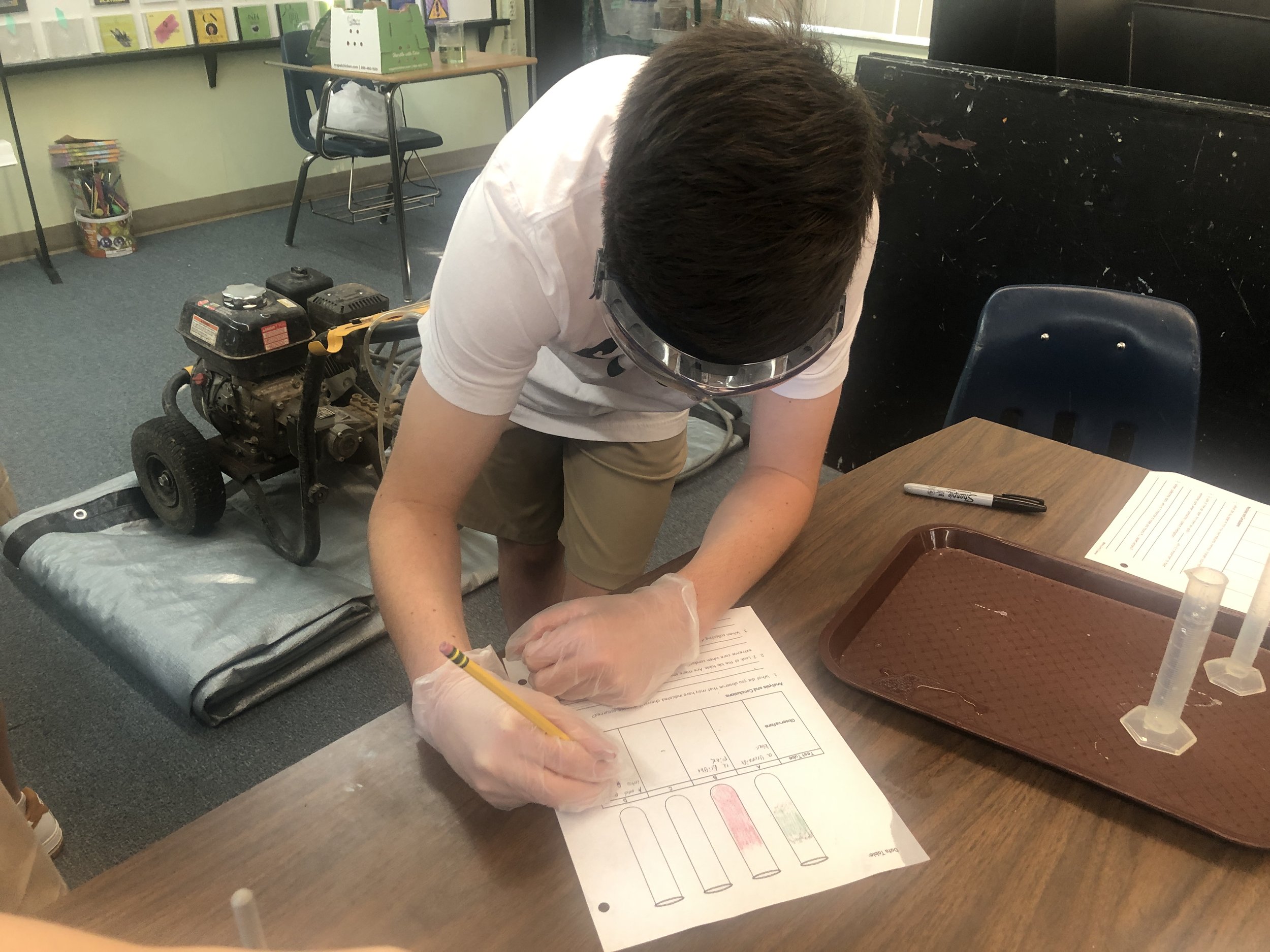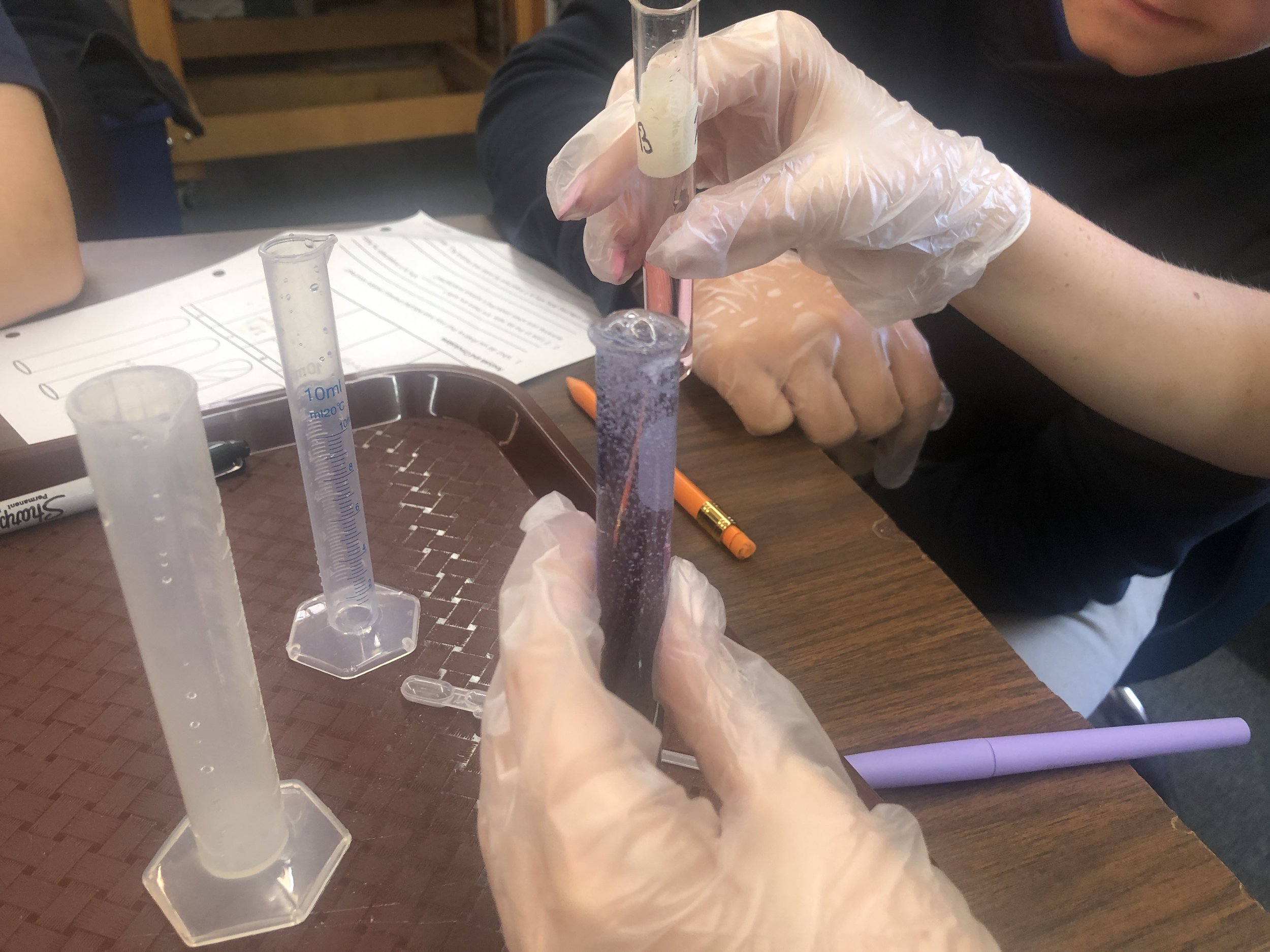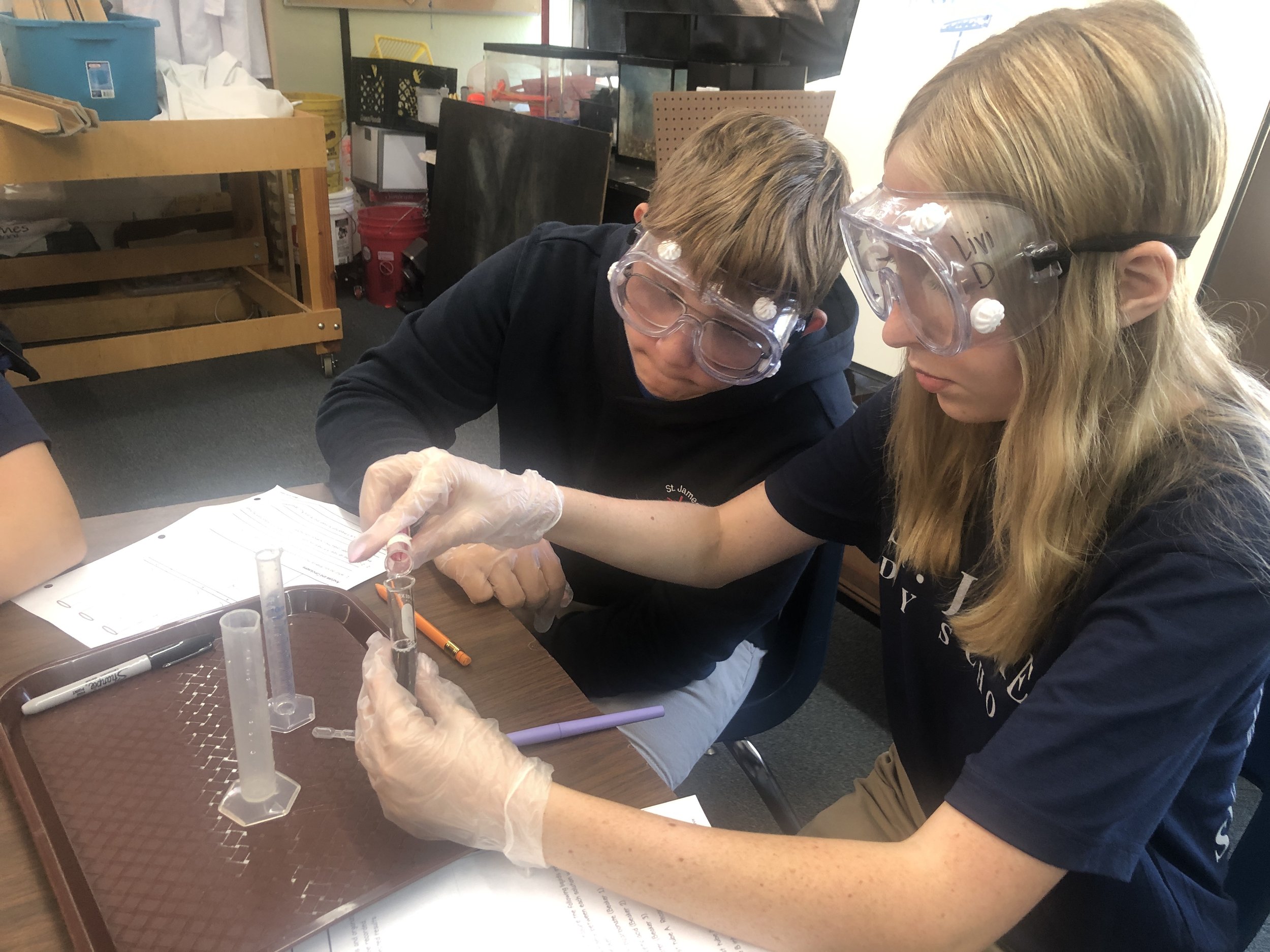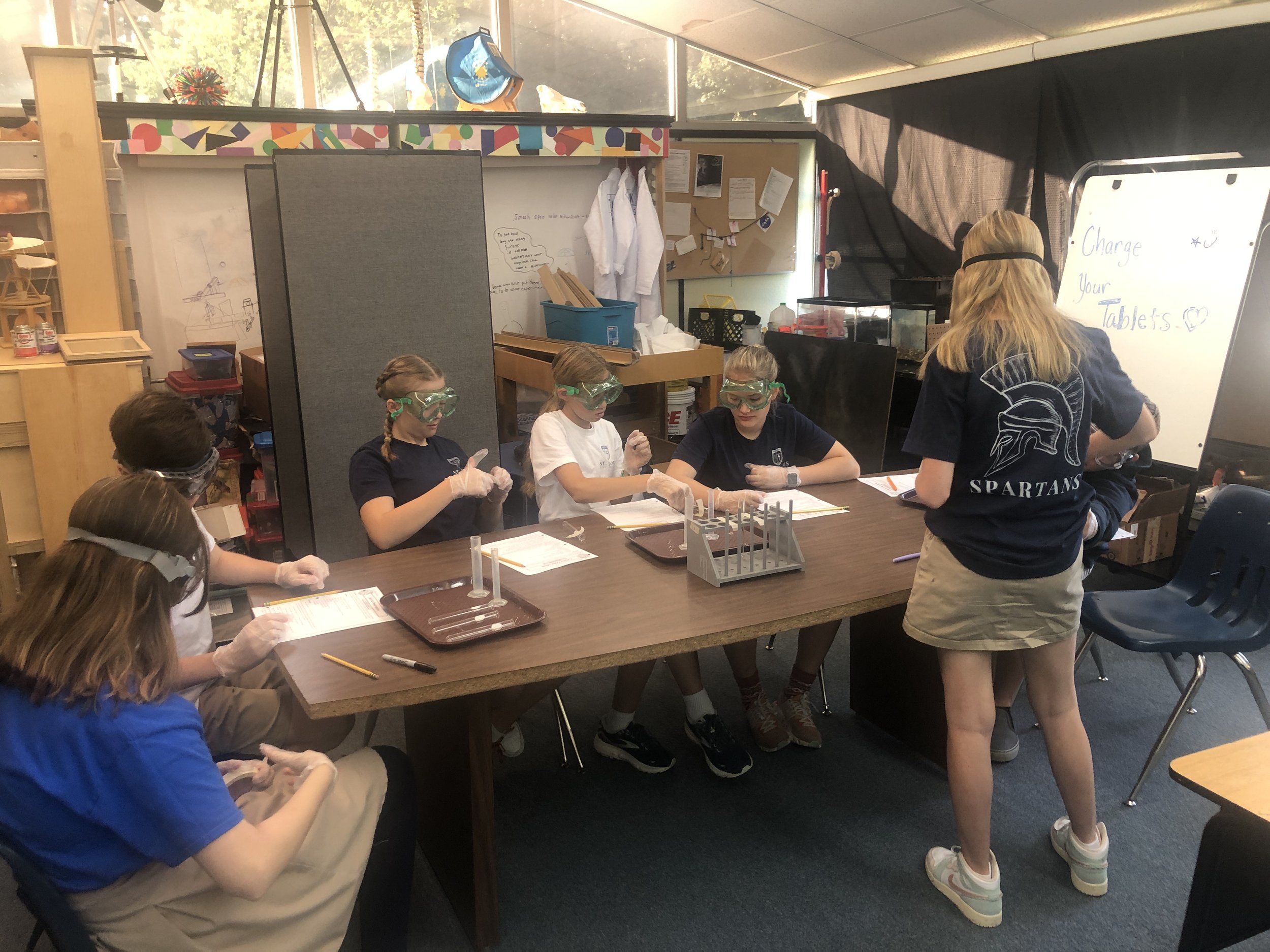Our eighth graders completed their first round of science stations! Science stations, typically done at the end of a unit, are seven designated locations in the classroom where activities challenge students to apply what they have learned and build on their understanding of the concept being taught. They provide an engaging way for students to extend their knowledge and skills by working independently of the teacher in small groups or pairs. Students benefit from science stations because they incorporate multiple learning styles with reading, writing, communicating, listening, and manipulation.
For our first unit, Experimental Design, our eighth graders worked together in small groups to create a new unit of measurement. They gave their new unit of measurement a unique name and an abbreviation. While using their new unit to measure various lengths around the classroom, the students completed a data table and then had to describe exactly how to measure using their new standard of measurement on an index card. Each group then swapped index cards with another group in order to test each other’s unit of measurement to see if they were able to come up with similar data. They all did such a fantastic job with this first round of stations!
